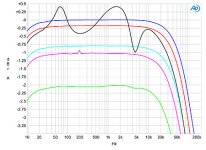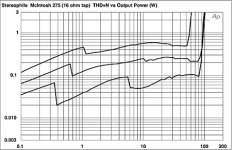jahjahlove
New member
- Thread Author
- #1
Hi everyone,
I have a question regarding amplifiers:
I bought some months ago a Crown CDI drivecore 4 300 amplifier. I wanted this amp for two reasons: its power in order to move the 15" of my JBLs, and also because this amp integrate a DSP, capable of room correction, active bi amping, etc... I wrote earlier in the forum the benefits I was expecting from such an amp driven in wifi by Audio Architect.
So I spent some month with it now; if I was not flushed by the sound quality, i was intellectually interested in its DSP possibilities, and its simplicity of use.
Recently I plugged back my MC275, and realised how better was the Mc at doing bass. I am not talking about timbers quality in the medium or highs, my question is only about bass, and here it is:
How come a 75W amp can do more and better bass than a 300W amp with a nice Harman room curve implemented in it ?!
If someone has a technical explanation to help me understand, it would be nice.
I know I am comparing orange and apple, being tube and class D, but a volt is a volt and a Watt is a Watt, ain it ?
David
I have a question regarding amplifiers:
I bought some months ago a Crown CDI drivecore 4 300 amplifier. I wanted this amp for two reasons: its power in order to move the 15" of my JBLs, and also because this amp integrate a DSP, capable of room correction, active bi amping, etc... I wrote earlier in the forum the benefits I was expecting from such an amp driven in wifi by Audio Architect.
So I spent some month with it now; if I was not flushed by the sound quality, i was intellectually interested in its DSP possibilities, and its simplicity of use.
Recently I plugged back my MC275, and realised how better was the Mc at doing bass. I am not talking about timbers quality in the medium or highs, my question is only about bass, and here it is:
How come a 75W amp can do more and better bass than a 300W amp with a nice Harman room curve implemented in it ?!
If someone has a technical explanation to help me understand, it would be nice.
I know I am comparing orange and apple, being tube and class D, but a volt is a volt and a Watt is a Watt, ain it ?
David


